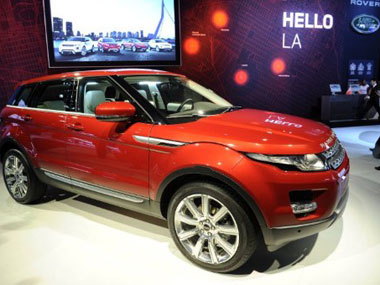One successful model can change the fortunes of a company and this is best reflected in Tata Motors’ performance. And no, we are not talking about the Nano.
The December quarter was the first full quarter in which the performance of Evoque, which Jaguar Land Rover (JLR) began delivering in September, was reflected. As a result, JLR posted a revenue growth of 41 percent and an 89 percent growth in its profit before tax. Both the retail as well as wholesale volumes posted smart gains of 34 and 37 percent, respectively. Retail volumes have improved to 78,293 units while wholesale volume has increased to 86,322.
[caption id=“attachment_213952” align=“alignleft” width=“380” caption=“While the Jaguar posted 9 percent growth in the December quarter of 2011 over 2010, Land Rover sales were up 41 percent AFP”]  [/caption]
It was the newly-launched Range Rover Evoque which is the reason for such remarkable numbers. While the Jaguar posted 9 percent growth in the December quarter of 2011 over 2010, Land Rover sales were up 41 percent from 46,444 units to 65,287 units. But for the incremental contribution of 19,614 from Evoque, there was negative growth from the models.
In terms of geographies, major growth has come from China, which has shot up by 58 percent, taking its contribution from 10 percent to 16 percent in global sales. North America grew 20 percent, while Europe (excluding Russia) was up 46 percent and UK gained 15 percent. Buoyed by its growth in China, Tata Motors will be setting up a manufacturing facility in the country.
Impact Shorts
More ShortsThe Indian operations of the company continue to disappoint with a sharp drop in net profit from Rs 410 crore in December 2010 to Rs 173.67 crore in December 2011.
While the output numbers have been known to the market as the company discloses sales numbers on a monthly basis, what has caught analysts off guard has been the operating margin of 20 percent as compared to a consensus 15 percent margin. This was on account of a depreciation in the value of the British pound and the euro.
The December quarter numbers show that Tata Motors is no longer an India play. The company’s fortunes, like that of Tata Steel, will be dictated by its performance in Europe, America and China.
The company will continue to show good growth numbers over the next three quarters on account of a smaller base. However, one will need to keep a close watch on the two currencies - the pound and the euro. Given the poor state of affairs in both the UK and the eurozone, it is unlikely that the currencies will appreciate.
Tata Motors thus has a clear road ahead, at least for the next nine months.


)

)
)
)
)
)
)
)
)



